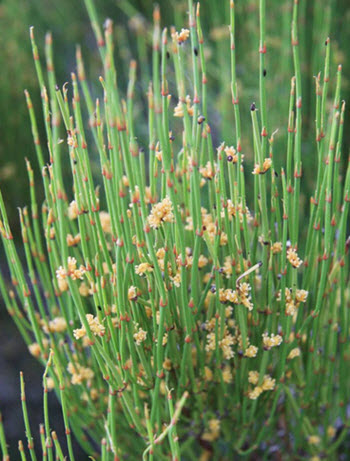Contents
Ephedra sinica is an Asian plant that contains ephedrine and pseudo-ephedrine. The plant is native to parts of China, Mongolia and Russia, and is an important medical plant in the folk medicine of the region.
Six different ephedrine-type compounds have been isolated from Ephedra sinica, with the two most frequently occurring ones being ephedrine and pseudo-ephedrine.
Ephedrine and pseudo-ephedrine impact the human body in various ways. They are thermogenic, stimulating the metabolism to increase the production of body heat. They also stimulate the brain, increase the heart rate, make the bronchial tubes expand, and constrict the blood vessels (thereby increasing blood pressure).
Ephedrine and pseudo-ephedrine can cause a number of unwanted side effects, ranging from mild irritability to seizures, heart attack and stroke.
If you are using a supplement containing Ephedra sinica, please be advised the incorrect labelling is common. Random testing of supplements have shown that many products contain a lower or higher amount of ephedrine and pseudo-ephedrine than advertised.
Examples of effects of Ephedra
- Increased sweating, which can lead to significant loss of fluids and electrolytes, causing dehydration
- Itchy skin and other skin reactions
- Nervousness, irritability and trembling
- Insomnia, which can be a desirable or undesirable effect depending on the circumstances. Some people use Ephedra specifically to be able to stay awake.
- Dizziness, sometimes combined with nausea and vomiting
- Headache, which might be caused by constricted blood vessels and increased blood pressure
- Increased heart rate
- Irregular heartbeat
- Hyperthermia
- Expanded bronchial tubes, which make it easier to breathe
- Seizures
- Stroke
- Heart attack
Scientific classification of the plant
| Kingdom | Plantae |
| Division | Gnetophyta |
| Class | Gnetopsida |
| Order | Ephedrales |
| Family | Ephedraceae |
| Genus | Ephedra |
| Species | Ephedra sinica |
Examples of modern ephedra usage
- Ephedra extract is included in many weight-loss pills and powders, often in combination with caffeine.
- Many athletic organization have rules against ephedrine use, since it is a performance-enhancer for athletes. It is for instance banned by the International Olympic Committee, The World Anti-Doping Agency, the United States National Basketball Association, and the United States National Football League.
- Ephedrine can be used as a precursor in the production of the illegal drug methamphetamine. People doing this typically use concentrated ephedrine from the pharmacy and not the plant.
The plant Ephedra funerea is a close relavitve of the Ephedra sinica, but they are native to two different parts of the world. While E. sinica grows wild in Eastern Asia, E. funerea is native to North America, where it is found in the Mojave Desert.
Among Native American peoples inhabiting the Mojave Desert region, there is a long tradition of using Ephedra funerea for medical and spiritual purposes. When Mormon settlers arrived to the region, they learned from the Native Americans and started drinking an infusion that became known to other settlers as Mormon tea.
Ephedra funerea is named after the Funeral Mountains in the Death Valley, located in the northern part of the Mojave Desert. In English, the plant is sometimes referred to as Death Valley Ephedra or Death Valley Jointfir / Jointpine.

